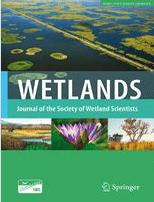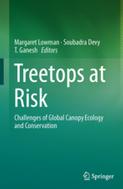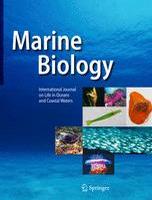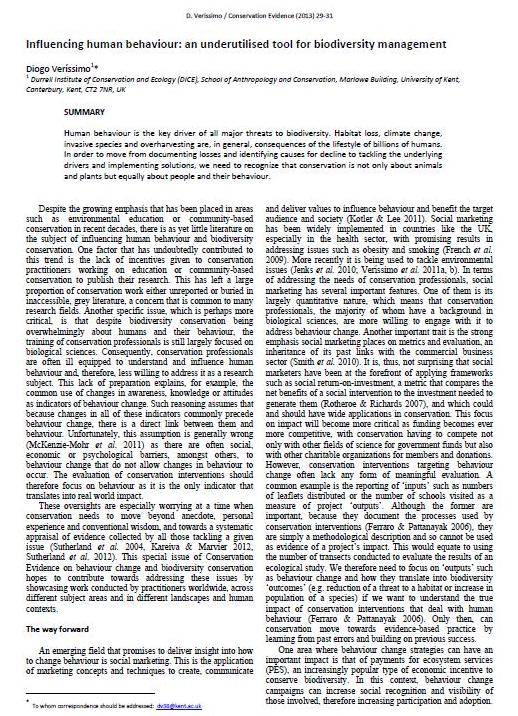|
Alumni Publications
 Choi, C., Gan, X., Hua, N., Wang, Y., & Ma, Z. (2013). The Habitat Use and Home Range Analysis of Dunlin (Calidris alpina) in Chongming Dongtan, China and their Conservation Implications. Wetlands. DOI: 10.1007/s13157-013-0450-9 Choi, C., Gan, X., Hua, N., Wang, Y., & Ma, Z. (2013). The Habitat Use and Home Range Analysis of Dunlin (Calidris alpina) in Chongming Dongtan, China and their Conservation Implications. Wetlands. DOI: 10.1007/s13157-013-0450-9
Shorebirds are declining worldwide due to rapid habitat loss. Many of the natural wetland habitats for shorebirds were converted into urban areas, agricultural lands and aquaculture ponds. Little is known about the value of aquaculture ponds to shorebirds. This study found that dunlins, an abundant migratory shorebird species with a declining trend in East Asia, preferred tidal flats, avoided agricultural croplands, and used aquaculture ponds in proportion to their availability. Tidal flats provide important roosting and foraging habitats for wintering dunlins, while aquaculture ponds may provide alternative roosting and supplemental foraging habitat. Conserving the natural wetlands on natural tidal flats is vital for shorebird conservation in East Asia but at the same time, the aquaculture ponds also could play an important role if managed properly, and therefore, deserve more attention from wetland managers.
 K. S. Seshadri and T. Ganesh (2013). Can Canopy-Dwelling Frogs Be Monitored from the Ground? A Case from Western Ghats of India. In: Treetops at Risk. (Eds) Meg Lowman, Soubadra Devy and Ganesh T. Springer, New York. Pp: 387-393. K. S. Seshadri and T. Ganesh (2013). Can Canopy-Dwelling Frogs Be Monitored from the Ground? A Case from Western Ghats of India. In: Treetops at Risk. (Eds) Meg Lowman, Soubadra Devy and Ganesh T. Springer, New York. Pp: 387-393.
Biodiversity in the canopies remains poorly explored in many parts of the world. Particularly, there exists a large knowledge gap in the tropics on the lesser known fauna inhabiting the canopies such as amphibians. Most canopy research programs require numerous human-hours, often in harsh environments which can pose limitations. But technological advancements of canopy access have assuaged this by opening up an entire new frontier in the topmost layer of the forests. In this chapter, we discuss the initial findings of a first-ever study to document the canopy and ground dwelling anurans by monitoring their vocalizations in the Western Ghats biodiversity hotspot of India, with a long-term objective to establish a monitoring program.
 Merckx, T., Huertas, B., Basset, Y. and Thomas, J. (2013) A global perspective on conserving butterflies and moths and their habitats, in Key Topics in Conservation Biology 2 (eds D. W. Macdonald and K. J. Willis), John Wiley & Sons, Oxford. doi: 10.1002/9781118520178.ch14 Merckx, T., Huertas, B., Basset, Y. and Thomas, J. (2013) A global perspective on conserving butterflies and moths and their habitats, in Key Topics in Conservation Biology 2 (eds D. W. Macdonald and K. J. Willis), John Wiley & Sons, Oxford. doi: 10.1002/9781118520178.ch14
Lepidoptera are one of the four major insect orders. They are scale-winged insects, traditionally divided into three major assemblages: micro-moths, butterflies and macro-moths. Before discussing practical conservation of Lepidoptera, it is necessary to consider their known rates and causes of change, and whether these are representative of other insect species. The chapter states that declines in Lepidoptera are driven primarily by factors that affect all species, rather than by targeted over collecting. Butterflies may be useful indicators of habitat change. The chapter suggests that butterflies can be sensitive predictors of the impacts of environmental change on other organisms, as well as useful representatives of less conspicuous terrestrial insects. It comments on how approaches to Lepidoptera conservation differ between regions and land use types, and stresses the importance of adopting a landscape scale allied to a resource-based view, both for single-species and for biotope/community conservation.
 Rakotoarinivo, M. & Rajaovelona, L. R. (2013). Palm conservation in Itremo, Madagascar. Palms: 57 (2), 101-103 Rakotoarinivo, M. & Rajaovelona, L. R. (2013). Palm conservation in Itremo, Madagascar. Palms: 57 (2), 101-103
Palms are highly characteristic of the east of Madagascar with about 91% of the 195 currently described species inhabiting the eastern lowland rainforest. In other parts of the island, palms, although few in numbers of species, can be conspicuous and even charismatic, especially when they form homogeneous populations across the landscape. This is the case in Itremo protected area, a rocky massif composed of quartzite, mica schist and marble extending through 244 km2 and located at about 70 km west of Ambositra in the Central High Plateau of Madagascar. With only three species recorded locally (Dypsis ambositrae, D. baronii and D. decipiens), the local palm flora is not rich but the visitor is immediately struck by the abundance of palm trees in the landscape.
 Vélez-Rubio, G.M., Estrades, A., Fallabrino, A., Tomás, J. (2013). Marine turtle threats in Uruguayan waters: insights from 12 years of stranding data. Marine Biology. DOI 10.1007/s00227-013-2272-y Vélez-Rubio, G.M., Estrades, A., Fallabrino, A., Tomás, J. (2013). Marine turtle threats in Uruguayan waters: insights from 12 years of stranding data. Marine Biology. DOI 10.1007/s00227-013-2272-y
We present the first study conducted in a wide spatio-temporal scale on marine turtles strandings (N = 1,107) over a 12-year period (1999–2010) in Uruguay. Five species were recorded Chelonia mydas (N = 643; 58.1 %), Caretta caretta (N = 329; 29.7 %), Dermochelys coriacea (N = 131; 11.8 %), Eretmochelys imbricata (N = 3; 0.3 %), and Lepidochelys olivacea (N = 1; 0.1 %). The first three species stranded throughout the Uruguayan coast, but differences in distribution patterns were detected among species. Although occurring year round, stranding records show a clear seasonal pattern with variation in monthly distribution among species, but with a peak of records in austral summer. Strandings provide indirect evidence of threats to marine turtles in Uruguayan and surrounding waters, particularly fisheries and marine debris. Our results demonstrate that Uruguayan coastal waters likely serve as a foraging or development area for at least three endangered marine turtle species in temperate waters.
 Valencia-Aguilar, A., Cortes-Gomez, A.M., & Ruiz-Agudelo, C.R. (2013) Ecosystem services provided by amphibians and reptiles in Neotropical ecosystems. International Journal of Biodiversity Science, Ecosystem Services & Management. DOI 10.1080/21513732.2013.821168 Valencia-Aguilar, A., Cortes-Gomez, A.M., & Ruiz-Agudelo, C.R. (2013) Ecosystem services provided by amphibians and reptiles in Neotropical ecosystems. International Journal of Biodiversity Science, Ecosystem Services & Management. DOI 10.1080/21513732.2013.821168
Human welfare depends directly or indirectly on the services provided by ecosystems. Amphibians and reptiles represent a high proportion of global species diversity and include species that are widely distributed throughout the world and play a variety of roles that benefit humans. The aim of this study was to identify and describe the ecosystem services provided by amphibians and reptiles in Neotropical ecosystems to evaluate the contribution of these highly diverse groups to human welfare. We conducted a literature review of articles and books from databases and university libraries and collected data from 106 studies. Amphibians and reptiles contributed directly and indirectly to the four types of ecosystem services: provisioning, regulating, cultural, and supporting. Most available studies reported the use of direct services from reptiles and indirect services from amphibians. Although eight ecosystem services were identified, most studies focused on reptiles as seed dispersers and protein sources...
 Conservation Evidence Speical Issue on Behaviour Change. Edited by Diogo Verissimo. Conservation Evidence Speical Issue on Behaviour Change. Edited by Diogo Verissimo.
Human behaviour is the key driver of all major threats to biodiversity. Habitat loss, climate change, invasive species and overharvesting are, in general, consequences of the lifestyle of billions of humans. In order to move from documenting losses and identifying causes for decline to tackling the underlying drivers and implementing solutions, we need to recognize that conservation is not only about animals and plants but equally about people and their behaviour.
See More Publications
|